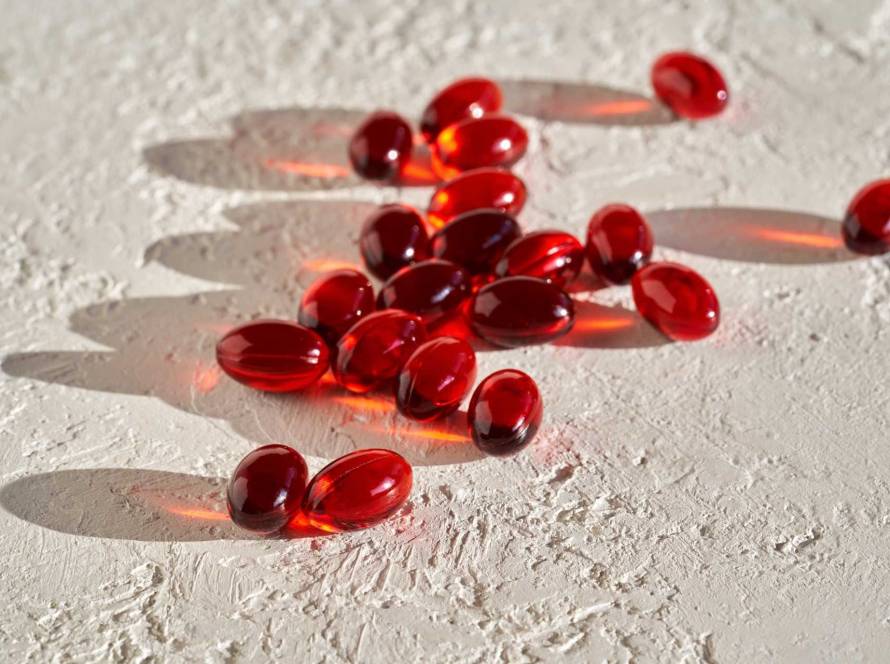Vitamin E emerges as our bodys defense system’s most significant antioxidant that protects cell membranes and prevents enzyme damage. Scientists have discussed vitamin E anti-aging benefits extensively and recent studies show its intricate connection to the aging process.
This piece dives into vitamin E’s anti-aging properties scientific foundation, from its cellular protection mechanisms to real world skincare applications. We’ll learn about its advantages and limitations through evidence based explanations that highlight its role in healthy aging and longevity.
The science behind vitamin E as an antioxidant
Vitamin E‘s remarkable protective effects come from its role as a fat soluble antioxidant that shields cells from destructive free radical damage. Let’s learn about this protective mechanism by looking at why free radicals can harm cellular health and longevity.
Understanding free radicals and oxidative stress
Free radicals are unstable molecules containing unpaired electrons. These reactive species aggressively seek electrons from healthy cells and steal them from vital cellular components like DNA, proteins and lipids. This sets off a destructive chain reaction of oxidation that can damage cellular function and integrity.
The body experiences oxidative stress when free radical production overwhelms its antioxidant defenses. This creates cellular damage and plays a role in many conditions including cardiovascular disease, neurodegenerative disorders, cancer and visible aging signs.
Our bodies naturally create some free radicals through normal metabolic processes like mitochondrial respiration and immune cell activation. Several external factors substantially increase free radical production:
- Environmental pollution;
- UV radiation exposure;
- Tobacco smoke:
- Industrial chemicals:
- Certain medications.
These free radicals can speed up aging both inside and out if we don’t have enough antioxidant protection.
The eight forms of vitamin E compounds
Vitamin E isn’t just one compound. It’s actually a name for eight related fat soluble antioxidant molecules. These eight compounds fall into two main groups:
- Tocopherols (four forms: alpha, beta, gamma delta);
- Tocotrienols (four forms: alpha, beta, gamma and delta).
Each form has a chromanol ring structure with various methyl groups attached and a hydrophobic side chain that can penetrate biological membranes. Though structurally similar, these compounds show different biological activities and antioxidant properties.
Alpha-tocopherol is the most biologically active form in humans. The liver uses alpha-tocopherol transfer protein (α-TTP) to incorporate it into lipoproteins, which helps distribute it throughout the body. This specific form meets our vitamin E needs and maintains the highest concentration in tissues.
Gamma-tocopherol plays a different but complementary role, though it’s the main form we get from many foods. It excels at neutralizing reactive nitrogen oxide species and has unique anti-inflammatory properties by blocking cyclooxygenase activity.
Vitamin E anti-aging benefits at the cellular level
Vitamin E does more than just act as an antioxidant. It fights aging right where it starts, inside our cells. This nutrient works at microscopic levels and intervenes in many processes that determine how long cells live and how well they work.
Protection of cell membranes and DNA
Cell membranes are the main battleground where vitamin E shows its protective power. Research shows that α-tocopherol positions itself strategically within cell membranes to shield polyunsaturated fatty acids from oxidative damage. This protection becomes vital because these membranes have high concentrations of fatty acids. Without enough vitamin E, they become easy targets for oxidative attacks.
Scientists have found that taking vitamin E reduces the number of old, non-dividing cells that build up as we age. This happens because vitamin E can lower the levels of P21, a protein that makes cells stop dividing. The nutrient also protects DNA by stopping free radicals from causing mutations that speed up aging.
Lab tests on human cells prove that both short and long term vitamin E supplements lower the number of cells showing signs of aging, measured by SA-β-gal markers. These results show how vitamin E helps cells live longer.
Regulation of gene expression in aging
Vitamin E helps us live longer by changing how our aging related genes work. Scientists have learned that this nutrient guides cell signaling and controls gene patterns that determine cell responses to age related stress.
The nutrient helps immune cells work better as we age. It increases the activity of genes that control cell division, especially in older organisms.
New research shows how vitamin E affects important aging genes. It boosts SIRT1, a protein that controls cell metabolism, DNA repair and inflammation. The nutrient also lifts Nrf2 gene levels, which help cells defend against oxidative stress.
The benefits don’t stop there. Vitamin E improves Calstabin2 production, a protein that helps heart tissue regulate calcium. These changes in multiple genes help cells resist aging better.
Impact on telomere preservation
Telomeres act as our cells’ biological clock. These protective caps on chromosome ends get shorter each time cells divide until they become too short and cells stop growing.
Scientists have found that stress makes telomeres shorter faster, but antioxidants like vitamin E might help keep them longer. Research shows that people who get enough vitamin E tend to have longer telomeres. One study found that patients who didn’t get enough vitamin E had shorter telomeres than those who did.
Mitochondrial support and energy production
Mitochondria make and receive most of the body’s reactive oxygen species (ROS), which puts them at the center of aging. Vitamin E protects these cellular powerhouses, especially their membranes.
Research shows how aging hurts mitochondria in important tissues. A study found that when rats aged from 4 to 12 months, their tissue and mitochondrial breathing dropped by 23-53%.
Vitamin E helps mitochondria in several ways:
- It stops harmful peroxyl radicals before they damage mitochondrial membranes;
- It keeps electron transport chain complexes I and IV working well;
- It shields mitochondria during times of oxidative stress;
- It helps build new mitochondria in brain cell connections.
Alpha-tocotrienol, a less known form of vitamin E, works especially well for mitochondria. Studies show it helps brain cells produce more energy by increasing ATP levels both overall and in specific cell parts.
These cellular mechanisms make vitamin E a powerful anti-aging nutrient that works at the most basic level of cell chemistry to keep cells young and healthy.
Topical applications for skin rejuvenation
Vitamin E works as a powerful antioxidant when applied to your skin. It provides quick benefits that work alongside its internal effects. The way this nutrient works with skin structures explains why it remains the life-blood of anti-aging products.
Absorption mechanisms through the epidermis
Our skin’s sebum naturally contains vitamin E, with facial areas showing higher levels due to more oil production. This fat soluble compound enters the epidermis in two ways: it moves through lipid matrices and travels via specific membrane proteins. The vitamin builds up in cell membranes and the stratum corneum’s extracellular lipid matrix after absorption.
The skin’s vitamin E levels increase by a lot in the dermis after topical use. Most of it collects in sebaceous glands. Different concentrations and formulas affect how well it penetrates, and even solutions with 0.1% can increase skin vitamin E levels.
Effects on collagen production and elasticity
Multiple mechanisms make vitamin E vital to collagen synthesis. It stops collagen from crosslinking, which makes aging skin less elastic. It also gets more fibroblast activity and thus encourages more of this important structural protein.
Research shows that vitamin E supplements reduce levels of matrix metalloproteinases, especially MMP-3. These enzymes break down collagen and lead to wrinkles. The vitamin helps keep skin elastic and firm by making the skin barrier stronger and reducing water loss.
Protection against photoaging and UV damage
Your skin gets double protection from topical vitamin E. The vitamin absorbs some UVB radiation and neutralizes reactive oxygen species from UV exposure as an antioxidant.
Research backs up these protective benefits. Vitamin E reduces lipid peroxidation, prevents DNA damage and stops redness when used before sun exposure. We can still get benefits even if we apply it right after sun exposure.
Formulations that maximize effectiveness
Most of the over-the-counter antiaging creams contain 0.5%–1% of vitamin E. Natural forms with all four tocopherols (alpha, beta, gamma, delta) last longer and work better.
Vitamin E works great with vitamin C to protect against sun damage. One formula stands out, it has 15% L-ascorbic acid, 1% alpha-tocopherol and 0.5% ferulic acid. This mix proved excellent at preventing thymine dimer mutations linked to skin cancer.
Vitamin E plays a vital role in protecting the body from oxidative stress, one of the main drivers of aging at the cellular level. By supporting skin elasticity, immune function and brain health, this antioxidant contributes to both visible and internal signs of healthy aging.
While a balanced diet rich in nuts, seeds and leafy greens can provide adequate levels, supplements and topical products may offer additional support when used wisely. Including vitamin E as part of a broader anti-aging lifestyle can help promote resilience, vitality and longevity over time.


